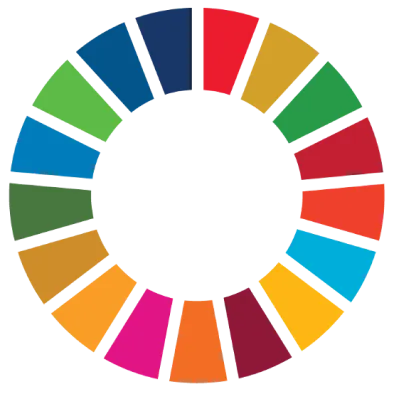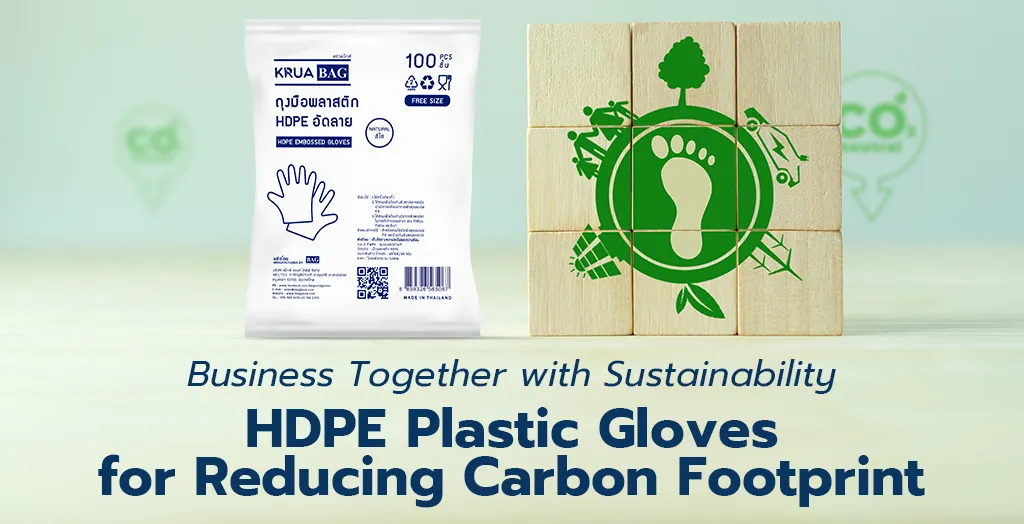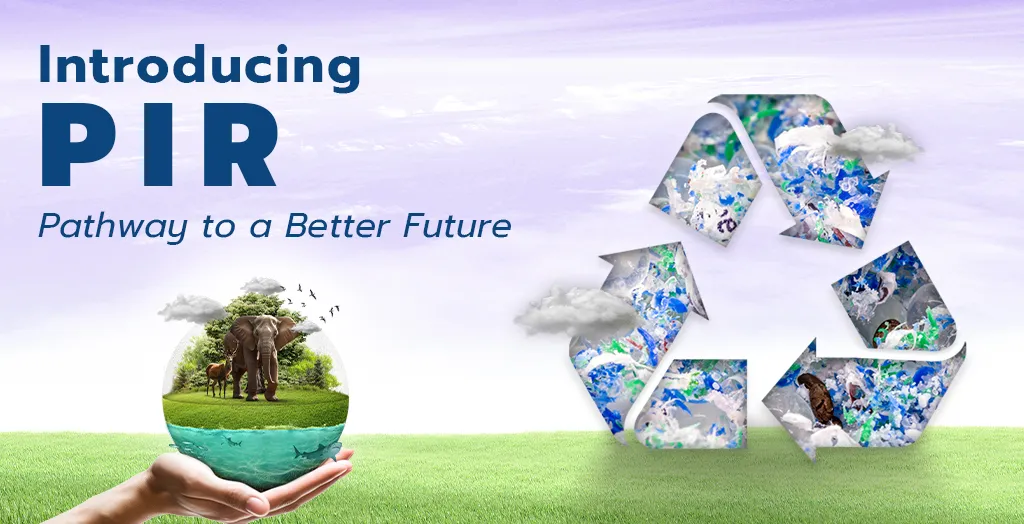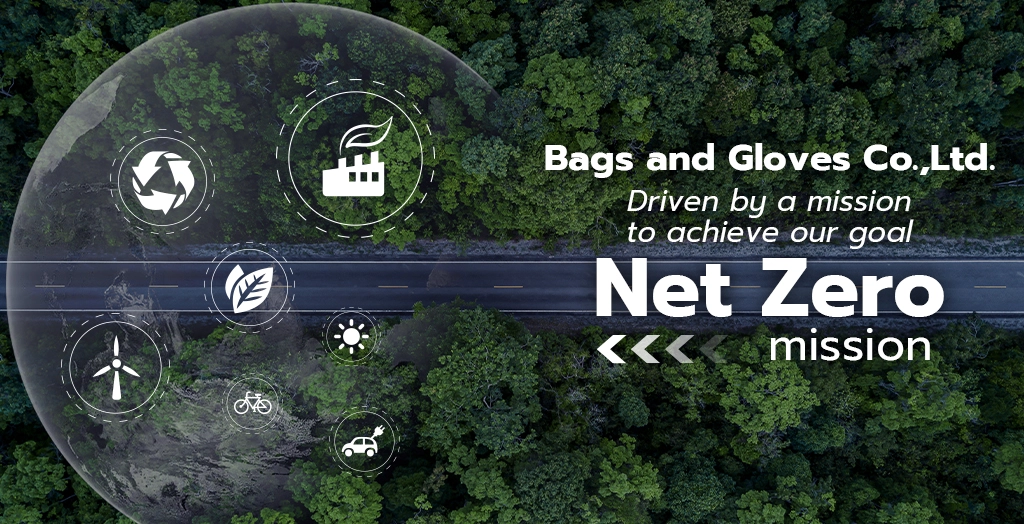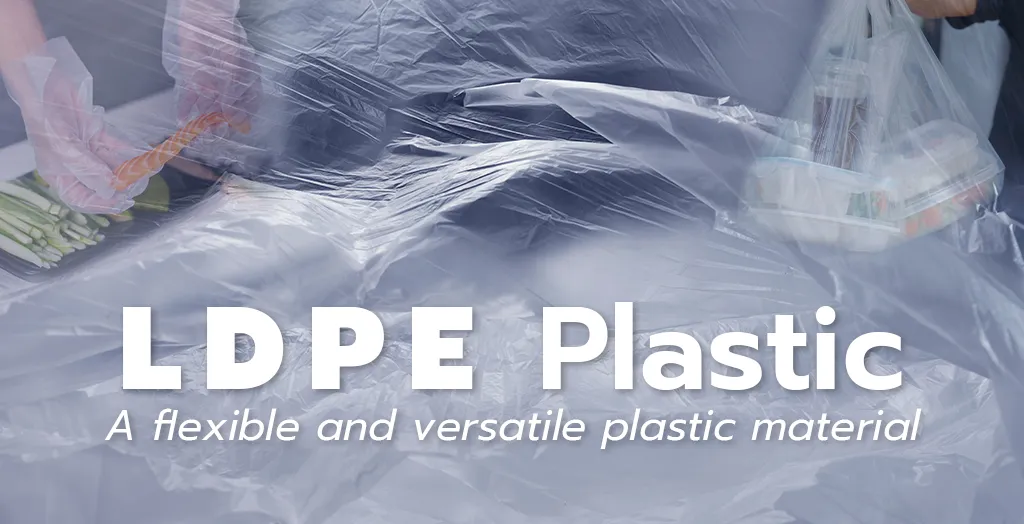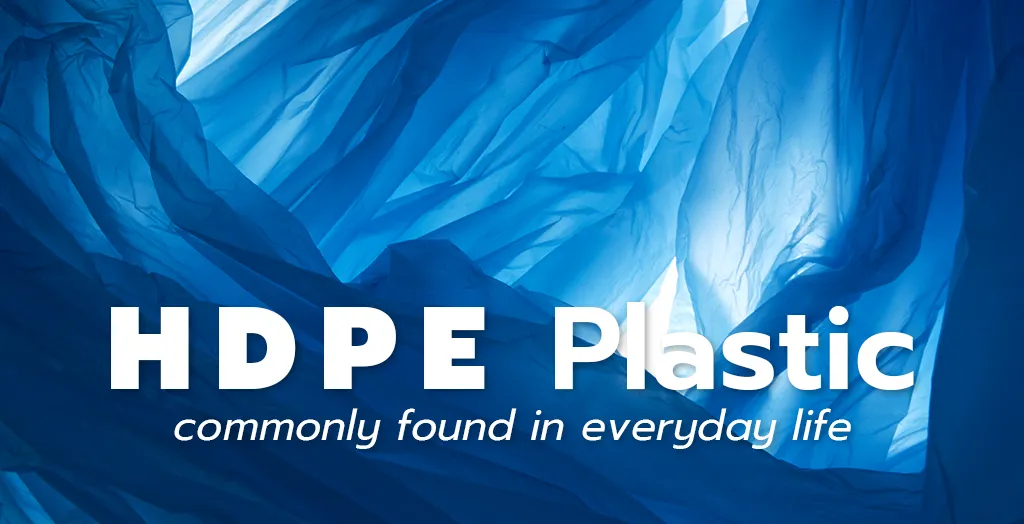HDPE Plastic Gloves by Bags and Gloves Co., Ltd. with a Certified Carbon Footprint
In a world where sustainability has become the heartbeat of modern business, measuring and disclosing the Carbon Footprint of Product (CFP) is a crucial step toward environmental responsibility.
Bags and Gloves Co., Ltd., a leading manufacturer of plastic gloves, aprons, sleeves, and protective equipment, has taken a significant step forward by conducting a CFP assessment for its clear HDPE plastic gloves — one of its most popular products.
The goal?
To measure and understand the amount of greenhouse gases emitted throughout the glove’s life cycle and use this insight to develop Low Carbon Products that are both environmentally friendly and aligned with the values of today’s conscious consumers.
Because at Bags and Gloves, sustainability isn’t just a goal — it’s built into how we work, produce, and grow.
CFP Assessment for HDPE Plastic Gloves
To align with our environmental sustainability policy, the company conducted a CFP study for clear HDPE plastic gloves (100 pieces per pack). This initiative reflects our ongoing commitment to reducing CO₂ emissions from our production process and developing products that leave a lighter footprint on the planet.
The CFP calculation covers every stage of the glove’s life cycle — from raw material acquisition and production to distribution, use, and end-of-life disposal (a Cradle-to-Grave approach).
Our HDPE Natural Embossed Glove (Size L, 10 microns thick, 100 pieces per bag, under the brand KRUA-BAG) was officially registered with the Thailand Greenhouse Gas Management Organization (TGO) and achieved a certified CFP value of:
486 gCO₂e (grams of carbon dioxide equivalent)
What Does 486 gCO₂e Mean?
This figure represents the total greenhouse gas emissions generated during the production of one pack (100 gloves) — equal to 486 grams of CO₂e.

To put it in perspective:
1 ton of CO₂e = 1,000,000 gCO₂e
→ Therefore, 486 gCO₂e equals 0.000486 tons CO₂e, or just 0.0486% of one ton of CO₂e.
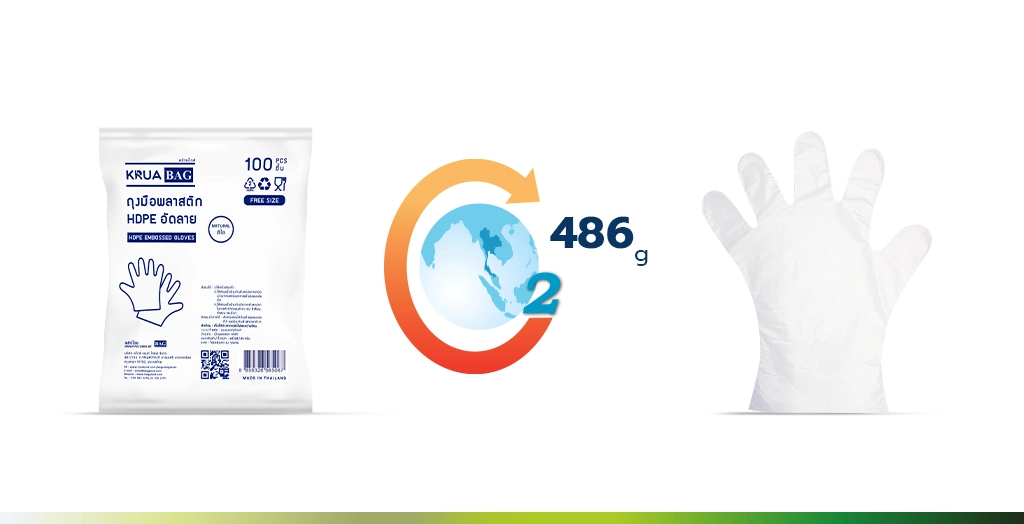
While that may seem small, every reduction counts — and this precise data helps guide real-world improvements.
The Benefits of Measuring CFP
Conducting a CFP assessment delivers insights that help the company:
- Identify emission hotspots in each stage of production to plan effective reduction strategies.
- Select low-carbon materials for manufacturing.
- Optimize production efficiency to minimize waste and energy consumption.
- Utilize clean energy sources, such as solar power.
- Enhance logistics and distribution to reduce unnecessary CO₂ emissions.
- Develop Low Carbon Products as part of a long-term sustainability roadmap.
- Provide transparency to customers and stakeholders by disclosing verified carbon data.
- Empower eco-conscious consumers to make informed, sustainable purchasing decisions.
A Measurable Step Toward a Low Carbon Future
The CFP certification for HDPE plastic gloves is more than just a number — it’s a testament to Bags and Gloves Co., Ltd.’s unwavering commitment to environmental stewardship.
With a CFP of only 486 gCO₂e per pack (100 gloves), we’re not only reducing our impact on the planet but also leading the way in producing certified Low Carbon Products that truly make a difference.
This initiative reinforces our belief that sustainability and business success go hand in hand — empowering both our company and our customers to take meaningful steps toward a greener, more sustainable future.

